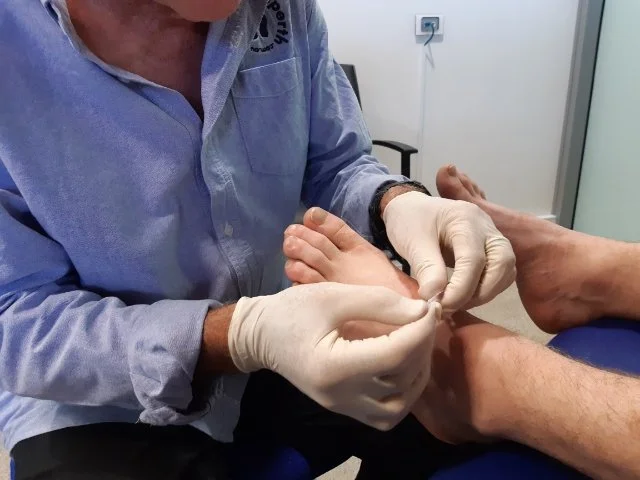Practical Needling Essentials - PNE1
The Portal to Comprehensive Dry Needling
For Podiatrists.
Dry Needling may be used to treat or help treat many podiatric medical problems often with an emphasis on resolving pain and improving function. It is particularly useful for pain of musculoskeletal and neurological conditions relating to the lower limb. You will be guided in providing treatment to the actual tissue that is damaged, painful and dysfunctional as well as treating the source of referred pain into the affected area.
Dry Needling is the therapeutic insertion of a needle without the injection of substances. These days acupuncture needles are used instead of syringes.
Some important points to consider:
A. Podiatrists clearly have the medical competencies required to insert an acupuncture needle and determine when it is medically inappropriate to do so. Podiatrists also have the competency to follow the appropriate course of action if an adverse event were to occur. Podiatrists graduate with training in skin penetration, injection techniques, minor surgery, wound healing and lower limb high risk management.
B. Practical dry needling skills can be quickly and easily learnt. The PNE workshops provide the training required to make extensive use of needling techniques.
C. There is no requirement to learn or have a belief in traditional acupuncture theories. You will not be trained to provide traditional acupuncture.
D. Major adverse events are rare. Medical training further improves safety.
Scientific research** has illuminated the principal mechanisms that explain how dry needling works. This knowledge helps determine the thrust of treatment:
Local to the point of insertion there is a release of peptides that increase blood flow and enhance healing.
The action potential in the peripheral nerve from the needling will initiate a response at the spinal level in the dorsal horn which causes an analgesic affect in the segment containing that nerve.
The same action potential also ascends to the mid-brain and initiates a response with descending inhibitory pain control to every level of the spinal cord causing an extra segmental analgesic affect by initiating a release of various neuromodulators.
Central regulating effects are also initiated within the limbic system responsible for the affective response to pain, a general emotional calming and often-improved sleep as well as stimulating the pituitary to enable the release of hormones such as ACTH and Endorphins.
When inserted into tender taut bands in muscles known as myofascial trigger points, the acupuncture needle will cause the release of the constriction in that band and its associated symptoms. This technique is known as ‘dry needling’ to denote that nothing has been injected.
** Medical Acupuncture – A Western Scientific Approach ** J. Filshie, A. White, M. Cummings, ELSEVIER, 2016. **
Please note: Completion of the PNE1 workshop is a per-requisite to enroll in PNE2. The Advanced Integration and Electrotherapy Masterclass Workshops take you into the leadership group for this modality.

